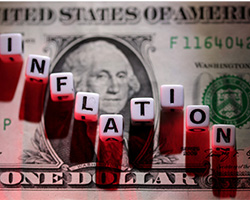Markets Are Assessing Side Effects of the Rate Hikes | Daily Market Analysis

Key events:
- USA – Building Permits (Nov)
- Canada – Core Retail Sales (MoM) (Oct)
Investors will be watching company reports and macroeconomic data closely this week to see if the Fed's interest-rate hike campaign will cause a recession. Key data, in particular, include the report on building permits, which will be released today.
Friday will be the December jobs report, from which market participants will try to draw conclusions about the state of the U.S. economy. Investors will also be watching for comments from the Fed on further interest rate hikes.
U.S. bank stocks are weak on worries about an expected recession and deteriorating profit margins. The S&P 500 bank sub-index is down about 11% this month.
Shares of Bank of America (NYSE: BAC) are down 16%, Wells Fargo (NYSE: WFC) is down 14% and JPMorgan Chase (NYSE: JPM) is down 6%. Behind the decline is investor concern that the Fed's measures to reduce inflation through tighter monetary policy will also create a drag on economic growth. In addition, higher interest rates could lead to lower profit margins for banks if the interest on deposits begins to eat away at interest income from loans.

Judging by Goldman Sachs (NYSE: GS) layoffs, banks are preparing for a challenging macroeconomic environment. Bank stocks have generally followed the S&P 500 for most of the year. The bank sub-index is now showing a 24% decline over the elapsed 2022 period, and the S&P 500 could show its biggest annual percentage decline since 2008.

Treasury yields reflect the interest paid by the U.S. government on its debt. When investors are worried about economic growth and the threat of recession, they show demand for government bonds, considered relatively safe assets. When demand rises, bond prices rise, causing their yields to fall. So the drop in U.S. Treasury yields to 3-month lows suggests that investors' appetite for risk is declining and they are increasingly opting for safer assets, including government bonds. This is usually interpreted as a signal of investor concern about the economy and growth prospects.

Gold prices have risen slightly, despite expectations of further Fed rate hikes, which are seen as unfavorable for the precious metal. Gold is generally considered a safe haven asset and it tends to perform poorly when interest rates rise because it does not offer regular yields. In addition, rising rates also lead to a stronger dollar, which puts pressure on gold prices. However, gold prices have rebounded after a strong sell-off following a Fed rate hike and comments from Chairman Jerome Powell that suggest we can expect to see further rate hikes next year. Some analysts say gold prices will continue to slide toward $1750 an ounce until it's clear that the Fed's rate hike cycle has come to an end. However, there are those among analysts who expect prices to rise to $1850 by the end of 2023.










